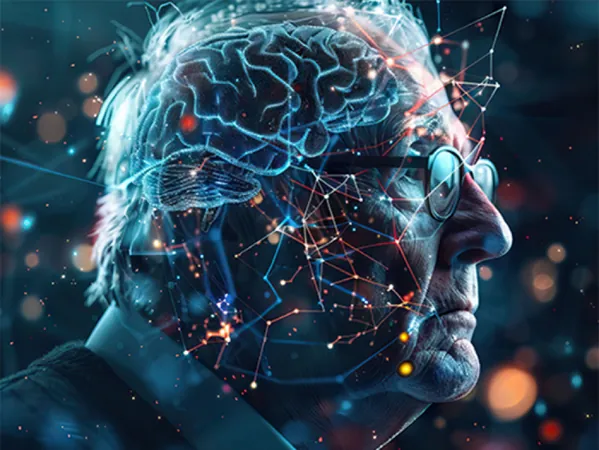
Groundbreaking Discovery Unveils Human Proteins Behind Brain Connectivity Variability
2024-10-31
Author: Ming
Introduction
A groundbreaking study recently published in *Nature Neuroscience* has identified an impressive range of human proteins that contribute to the differences in functional brain connectivity among individuals. This pioneering research comes as a significant step toward unraveling the complexities of how microscopic molecular interactions manifest into large-scale brain communications, impacting cognition and behavior.
Research Leadership
Dr. Jeremy Herskowitz, an associate professor at the University of Alabama at Birmingham’s Department of Neurology, and Dr. Chris Gaiteri from SUNY Upstate Medical University, led the study, aiming to connect molecular data with neuroimaging insights. Dr. Herskowitz emphasized the study's central goal: "Our objective is to deepen the understanding of the brain, shedding light on the mechanistic underpinnings of human cognition."
Methodology
The research utilized samples from the Religious Orders Study and Rush Memory and Aging Project (ROSMAP) at Rush University, which involves Catholic nuns, priests, and brothers aged 65 and older—each having undergone extensive medical examinations and agreeing to donate their brains post-mortem for research purposes.
Data Analysis
The team analyzed data from 98 ROSMAP participants, correlating resting state fMRI, structural MRI, and genetic information with experimental measurements of dendritic spine morphology, proteomics, and gene expression from critical brain regions. Their unique methodological approach encompassed a vast range of biological scales—from molecular to neuronal to whole brain imaging.
Key Breakthroughs
A key breakthrough was the focus on dendritic spines—tiny protrusions on neurons that facilitate synaptic contacts—which allowed researchers to integrate molecular and neuroimaging data holistically. Dr. Herskowitz noted, "Initially, the protein and RNA measures failed to account for variability in connectivity; however, incorporating dendritic spine morphology was pivotal in linking these molecular signals to brain region communications."
Significance of Dendritic Spines
Dendritic spines are crucial for synaptic plasticity and the brain’s learning and memory capabilities, allowing neurons to adapt and reconfigure their connections. This adds a new layer to previous research, which suggested that not just the number, but the quality of these spines significantly affects memory retention in older adults.
Research Findings
The study ultimately identified hundreds of proteins associated with individual differences in functional connectivity and structural variations in the brain. Notably, these proteins were enriched in areas related to synaptic function, energy metabolism, and RNA processing—highlighting the intricate biochemical interactions that determine how different brain regions communicate.
Future Directions
Looking ahead, Herskowitz affirms the importance of this multi-faceted approach: "Our research underscores the necessity of collecting and analyzing data from various scientific perspectives to truly understand how human brain function operates across multiple levels of biophysical complexity." As neuroscience progresses, these findings pave the way for further explorations into how specific molecular changes influence cognition, behavior, and the fundamental nature of consciousness itself.
Conclusion
This study marks a significant advancement in brain research, offering a richly detailed perspective that could lead to future breakthroughs in understanding neurodegenerative disorders and cognitive function across aging populations. As the search continues, the implications of such discoveries could be profound, influencing everything from treatment methodologies to the enhancement of mental agility in our aging societies. With an ever-growing body of evidence, researchers are poised to uncover even more about the brain’s hidden intricacies and their bearing on who we are as individuals. Stay tuned for more neurological revelations!




 Brasil (PT)
Brasil (PT)
 Canada (EN)
Canada (EN)
 Chile (ES)
Chile (ES)
 España (ES)
España (ES)
 France (FR)
France (FR)
 Hong Kong (EN)
Hong Kong (EN)
 Italia (IT)
Italia (IT)
 日本 (JA)
日本 (JA)
 Magyarország (HU)
Magyarország (HU)
 Norge (NO)
Norge (NO)
 Polska (PL)
Polska (PL)
 Schweiz (DE)
Schweiz (DE)
 Singapore (EN)
Singapore (EN)
 Sverige (SV)
Sverige (SV)
 Suomi (FI)
Suomi (FI)
 Türkiye (TR)
Türkiye (TR)